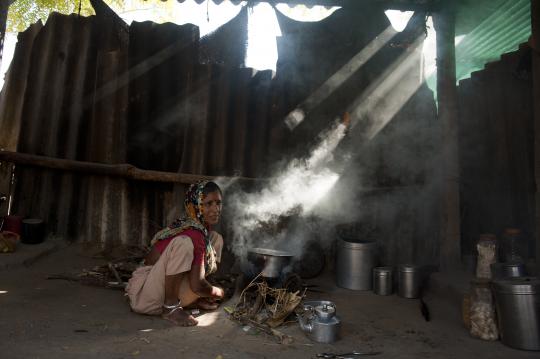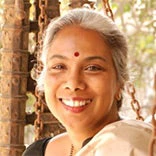She and leaders of governments, companies and organizations like the World Bank Group were gathered to pledge record amounts of finance and country-level actions to tackle the insidious health and environmental challenges posed by the simple act of cooking.

Growing up in India, I have always been conscious of the daily grind that women and girls in remote, rural areas go through just to prepare one meal. There’s the long, arduous and sometimes dangerous walk to get firewood, sticks or charcoal – whatever one can afford to find or buy. There’s the walk home, loaded down with that fuel. This can take up to five hours in rural areas – time that could be spent at school, work or building a small enterprise. And then of course, there’s the time spent breathing in smoke as they cook an often simple meal of bread, rice, lentils or vegetables. In India alone, more than one million deaths a year are attributed to traditional cooking practices - a shocking figure by any reckoning.
Besides the health impacts, there are also severe environmental effects – deforestation and the significant contribution to climate change from black carbon emissions.
This is one of the greatest development challenges the world faces yet, despite efforts over many decades, the deaths and illness continue in many developing countries from Bangladesh to Uganda. Part of the reason that we haven’t made the needed inroads is that the issue crosses so many sectors – health, gender, environment, technology, poverty, and energy. The challenge is to combine all of our forces – across all these areas of work – to replace old with new, cleaner and more efficient cookstoves. As the summit heard from leader after leader, we are more effective when we put all our resources and experience together.
I am proud to say that the World Bank Group and Energy Sector Management Assistance Program (ESMAP) announced a new partnership with the Global Alliance for Clean Cookstoves at the summit to help bring clean cooking to 100 million households. We plan to mobilize $60 million in finance for this partnership that will work at the country level on standards, technical support to clean stove supply chains, and awareness raising among consumers. Our new partnership was one of over 70 pledges at the summit totaling $413 million in commitments for finance and action. We now need to convert these commitments into concerted international action to improve the affordability of clean and efficient stoves, build supply chains for clean fuels, and to reach remote and poor communities who remain dependent on traditional fuels like firewood, dung and charcoal for fuel.
We are also helping with spreading the word. Take a look at the Development Dialogue that I moderated online over the last few weeks running up to the summit. We brought together a record-breaking number of partners and contributors – among them celebrity chef Jose Andres.
With so much support, so many great minds, and so much commitment now behind the clean and efficient cooking and heating challenge, I am confident that the world can make the change that’s needed. We must act so that the heart beats strongly in the hearth.


Join the Conversation